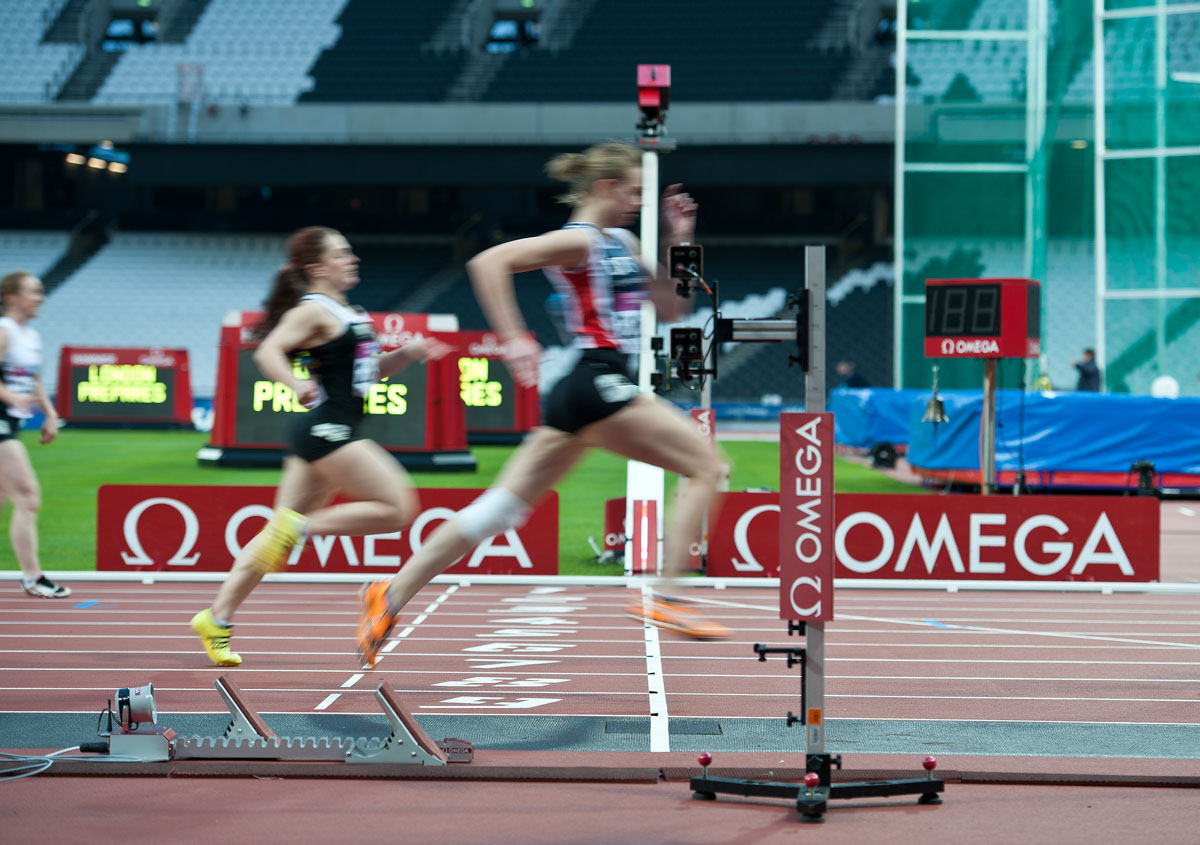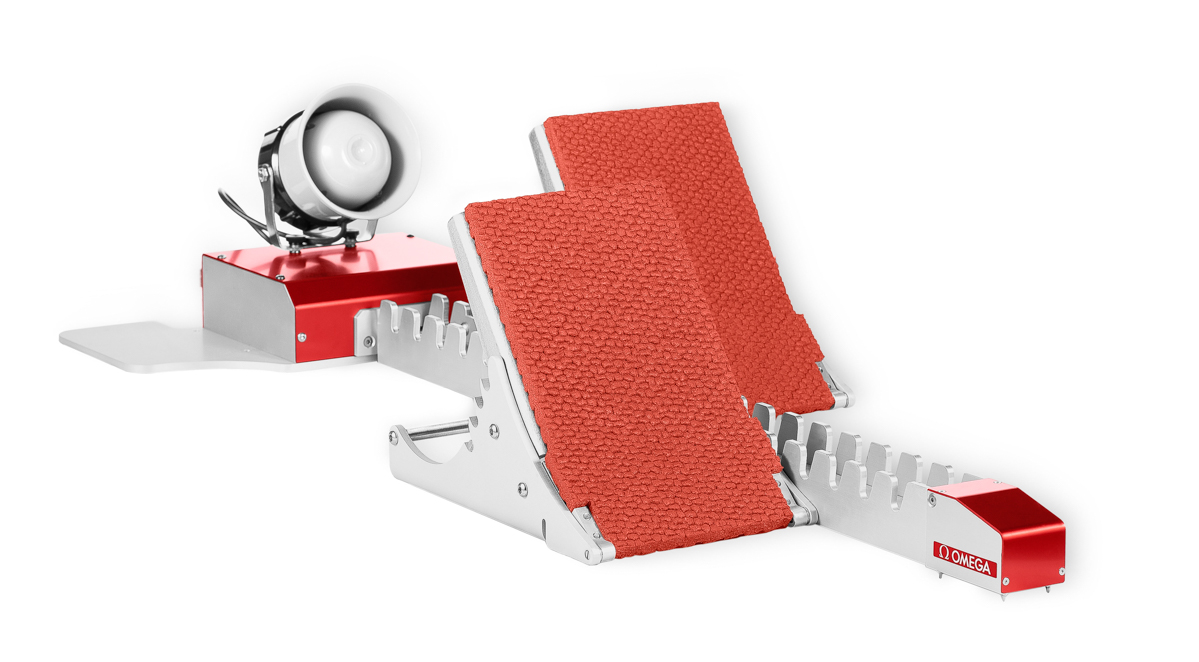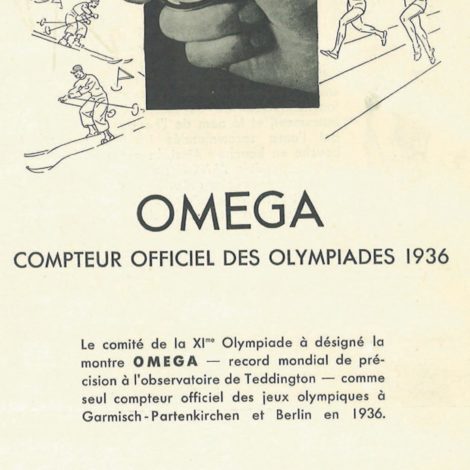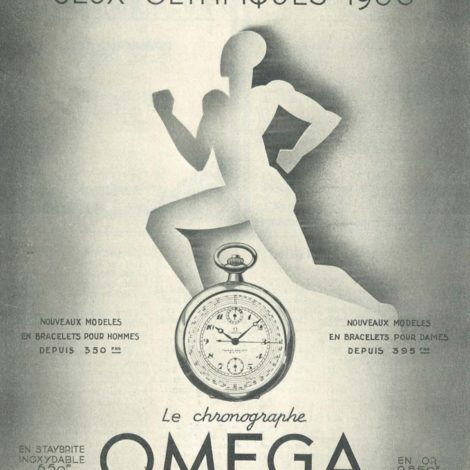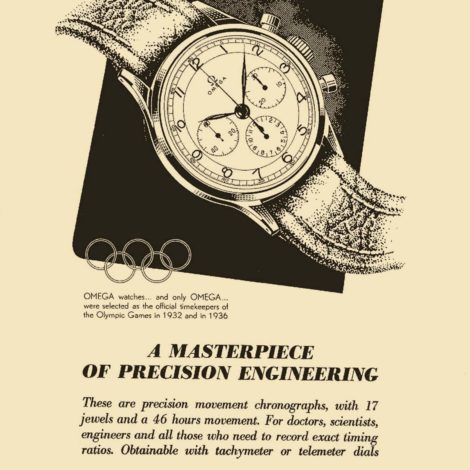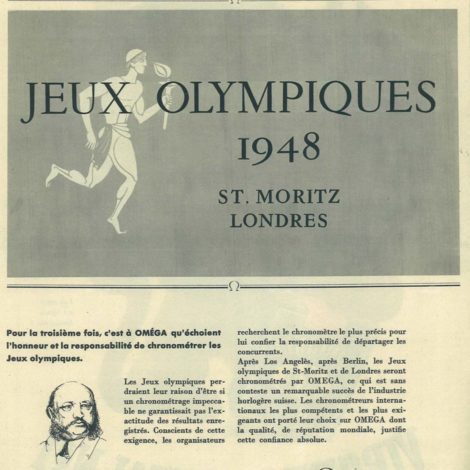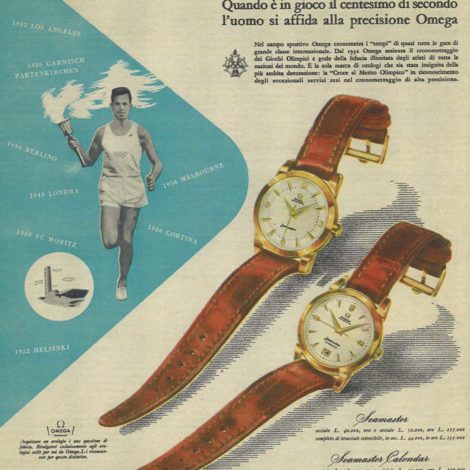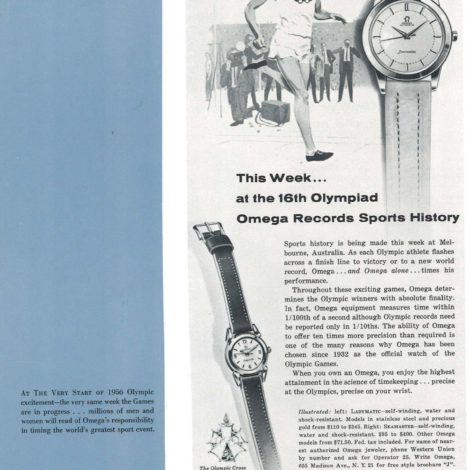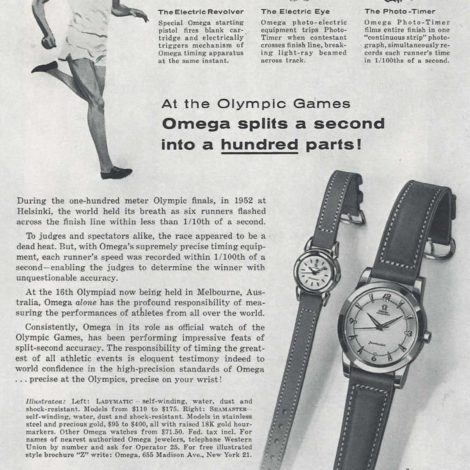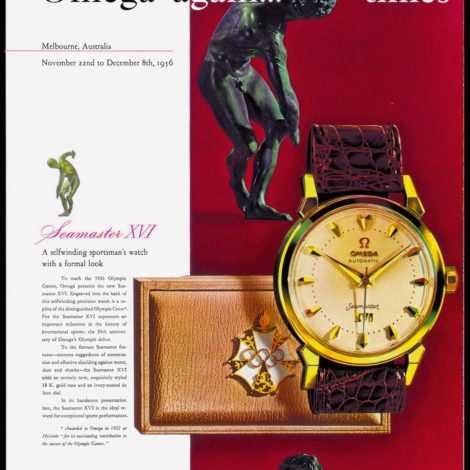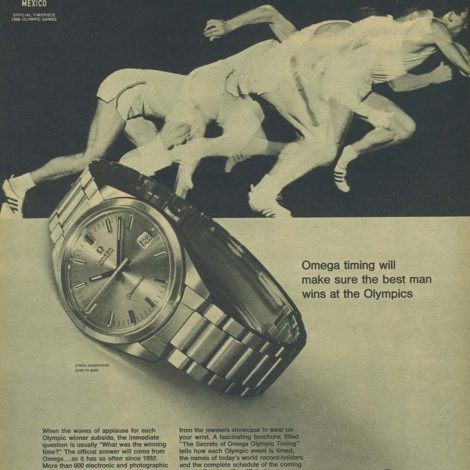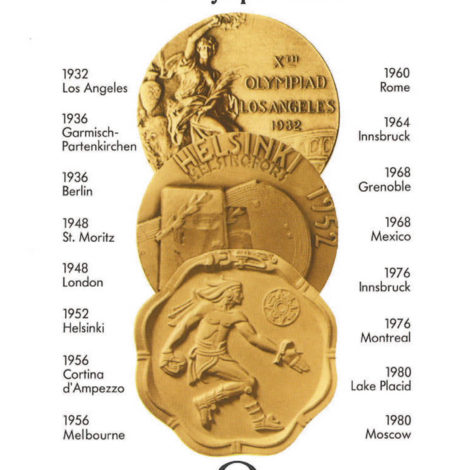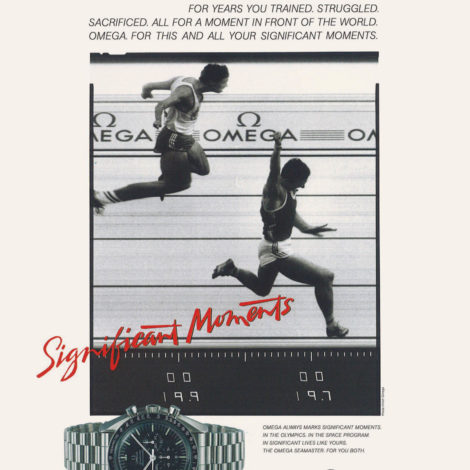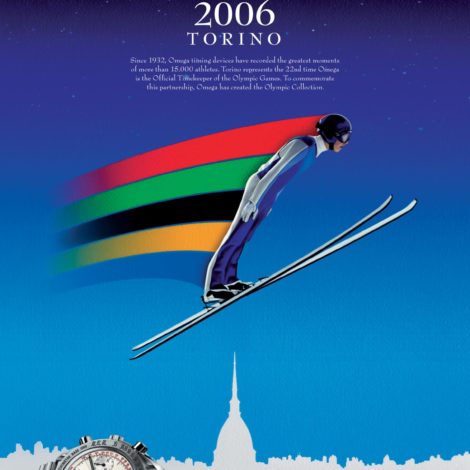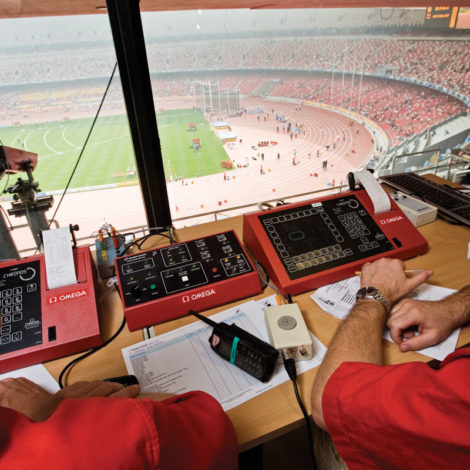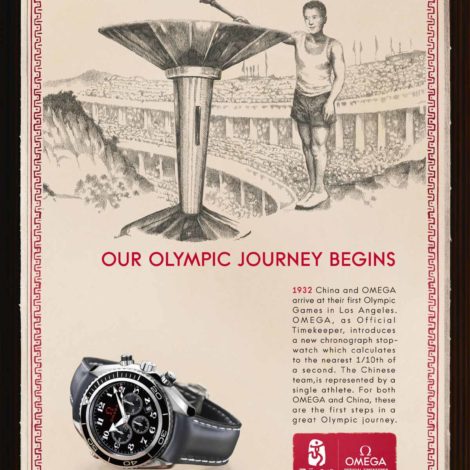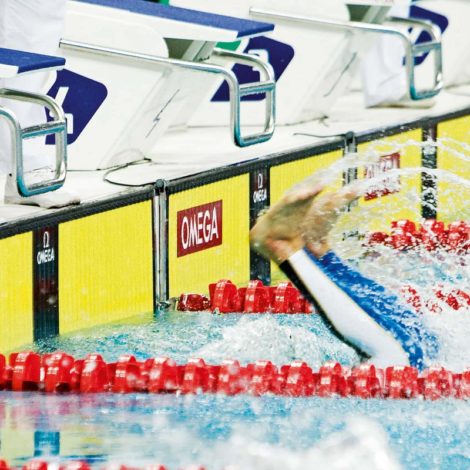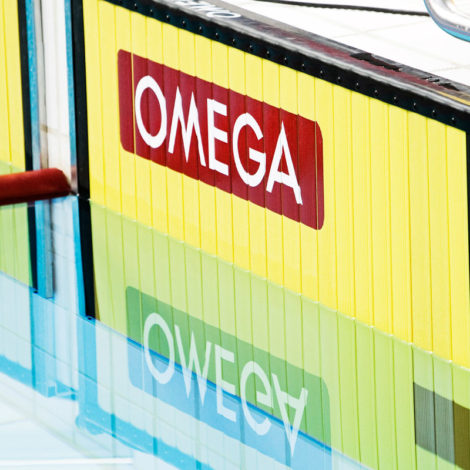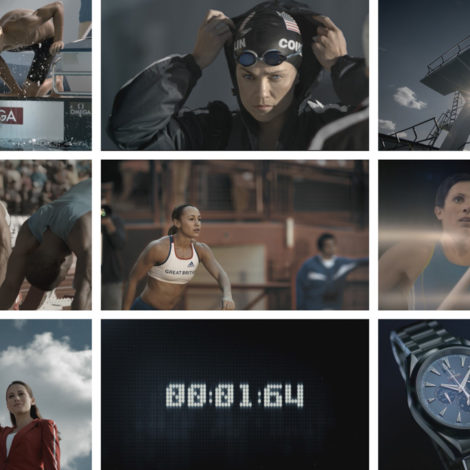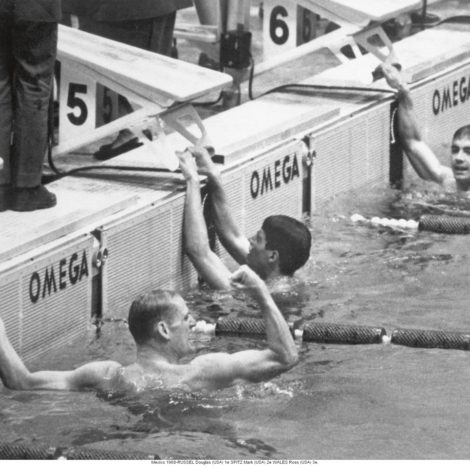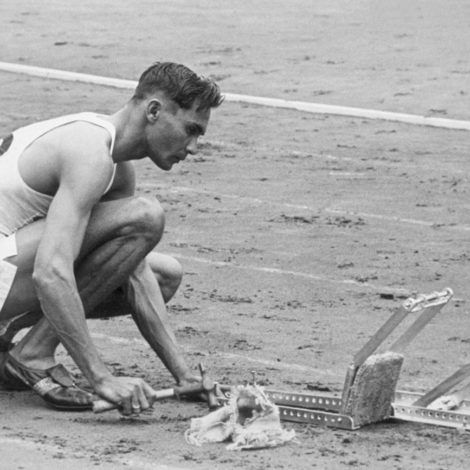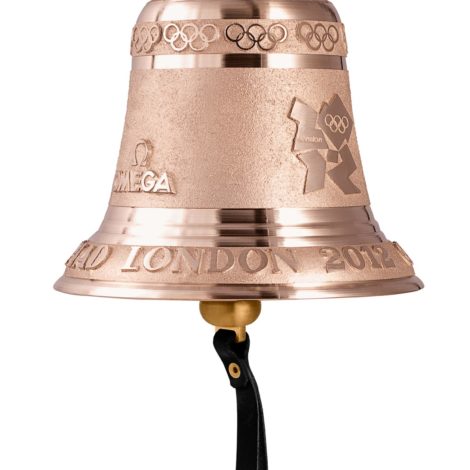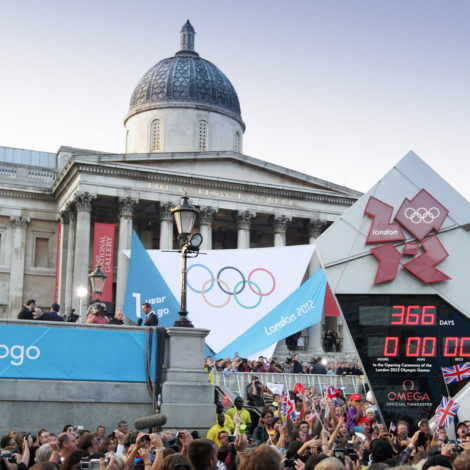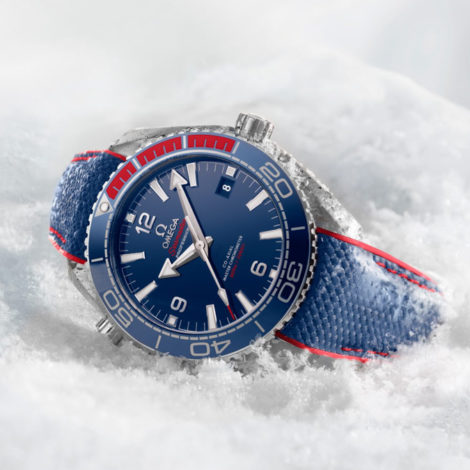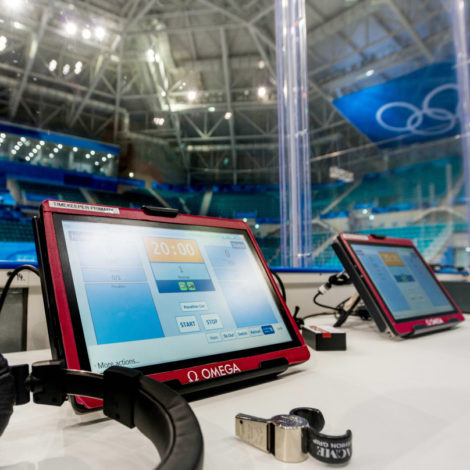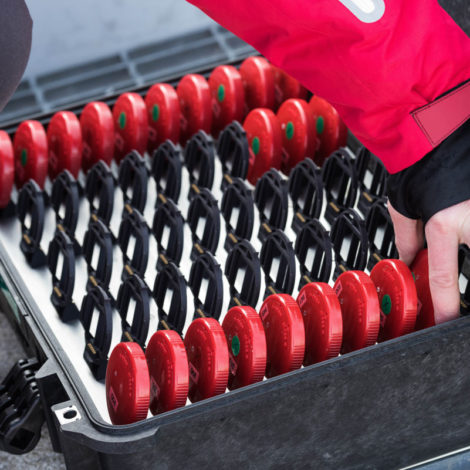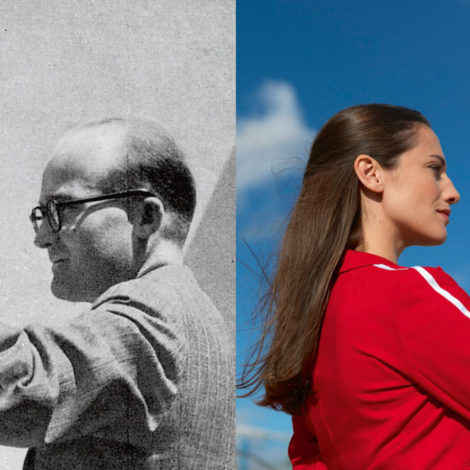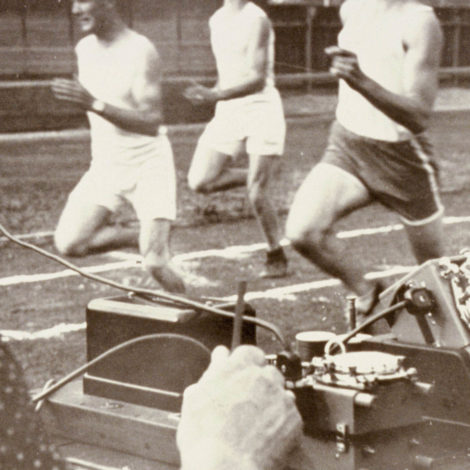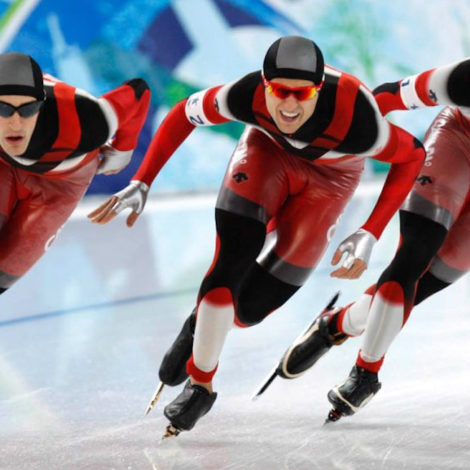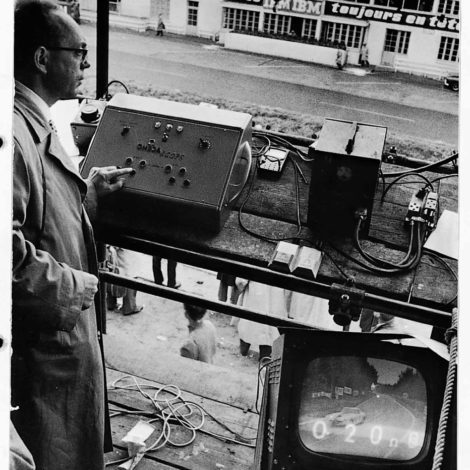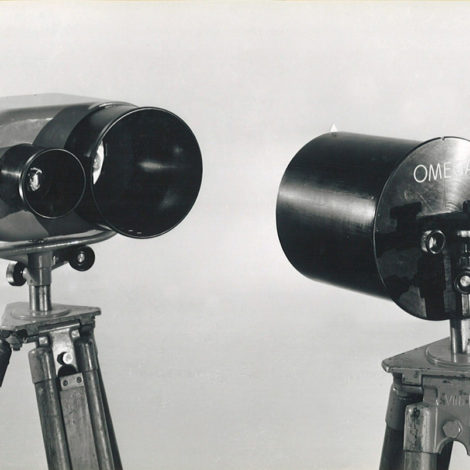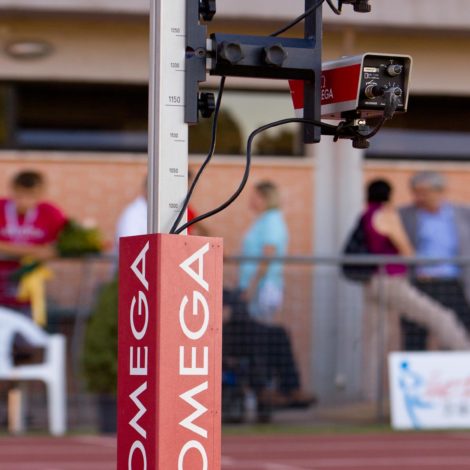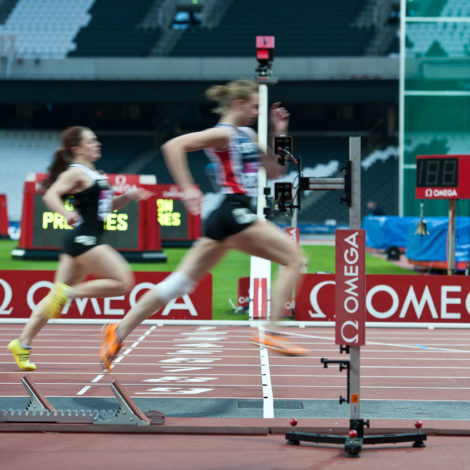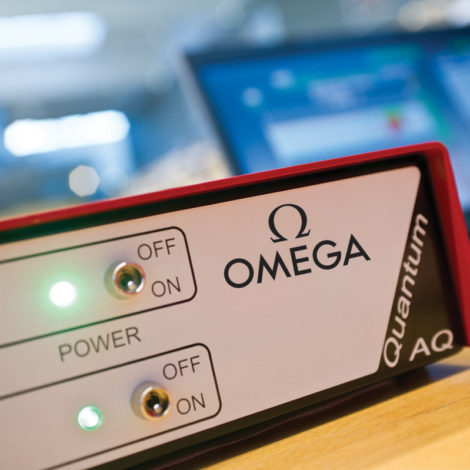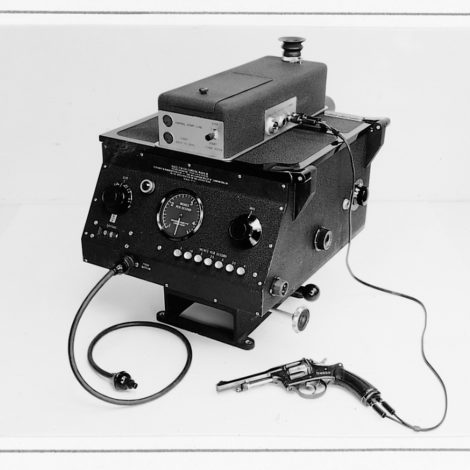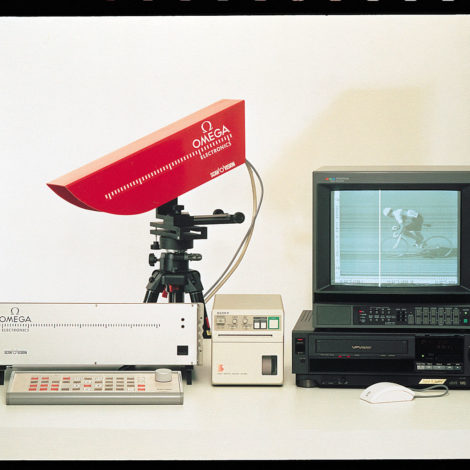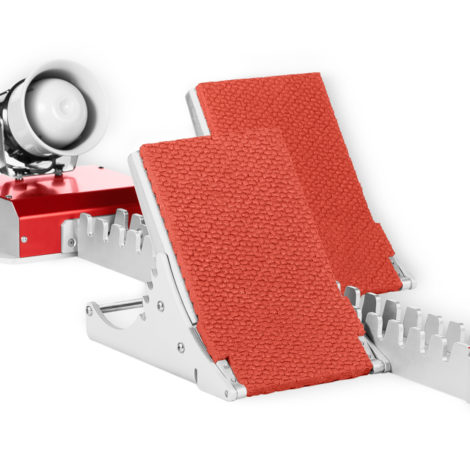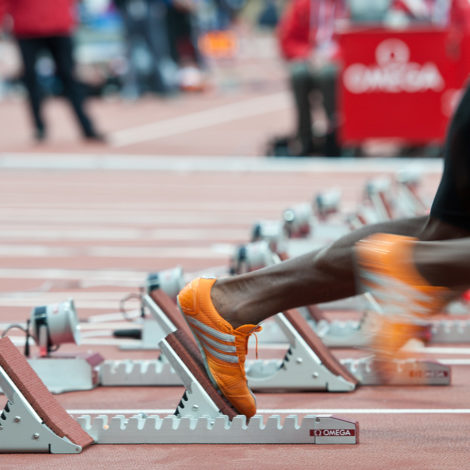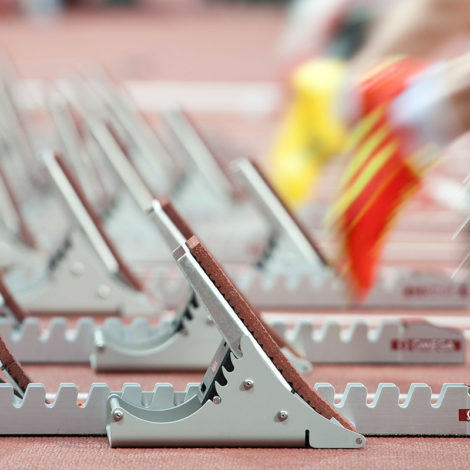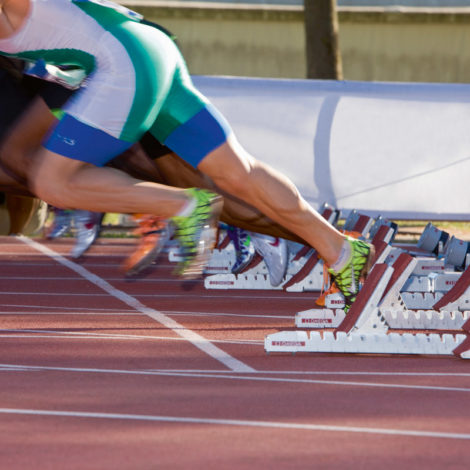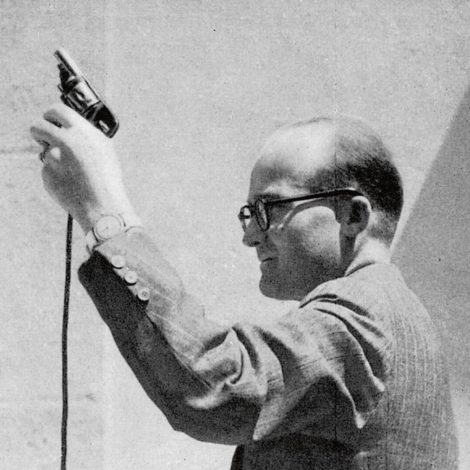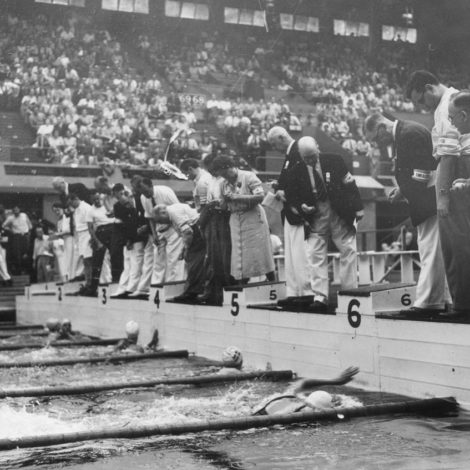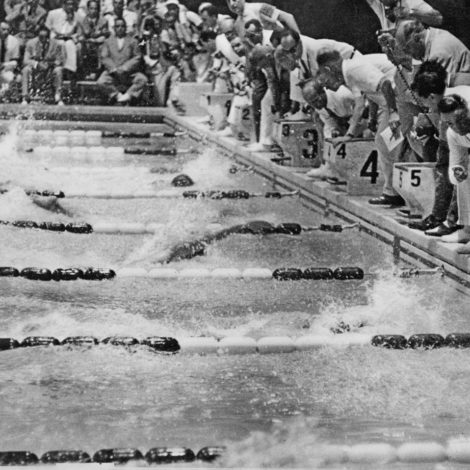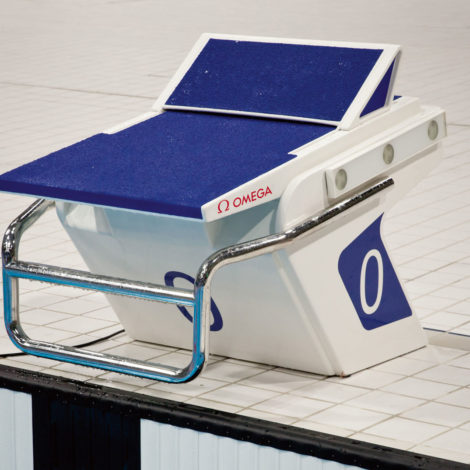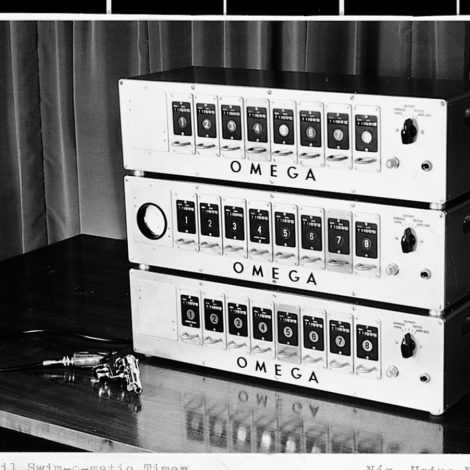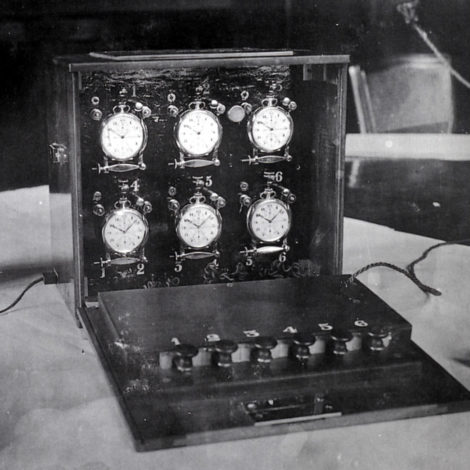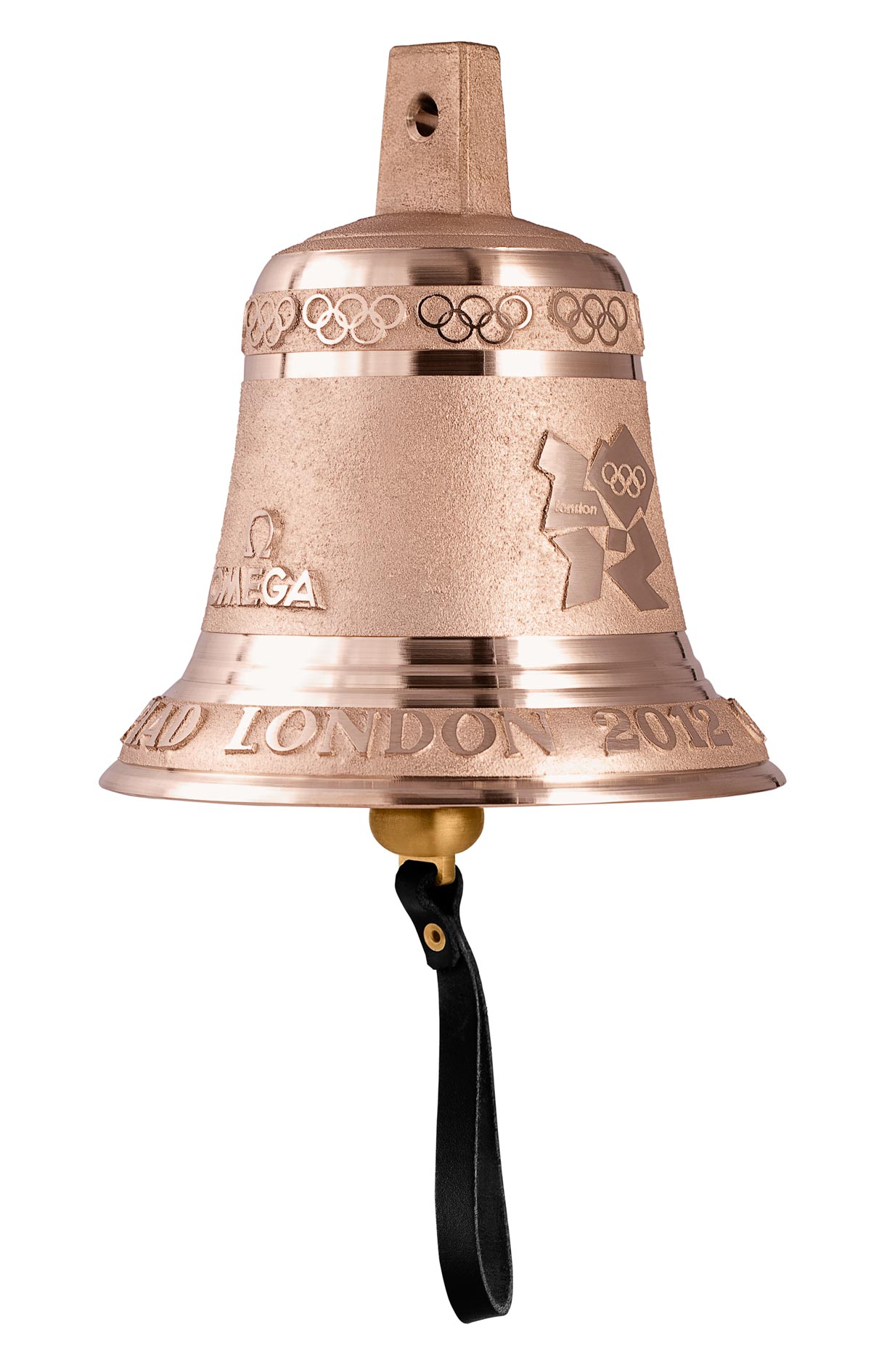
The Olympic bells actually say Omega on them – the Omega Swiss Timing workshop has a wall covered in these things from all dozens of previous Olympic Games.
In 2008, at the Beijing Summer Games Omega turned up with a whopping 420 tons of equipment to keep track of the performance of 10,942 athletes over 302 events, 132 Olympic records, and 43 world records. For the marathon races, Omega equipped the lead car with a GPS transmitter to help keep track of the progress of the leaders, along with wireless radio signal transmitters that have been fitted to every athlete’s shoe to help collect data as they passed by a set of antennas installed along the course. On such a long course, this helped the audience follow closer than ever the way the race to marathon victory unfolded.
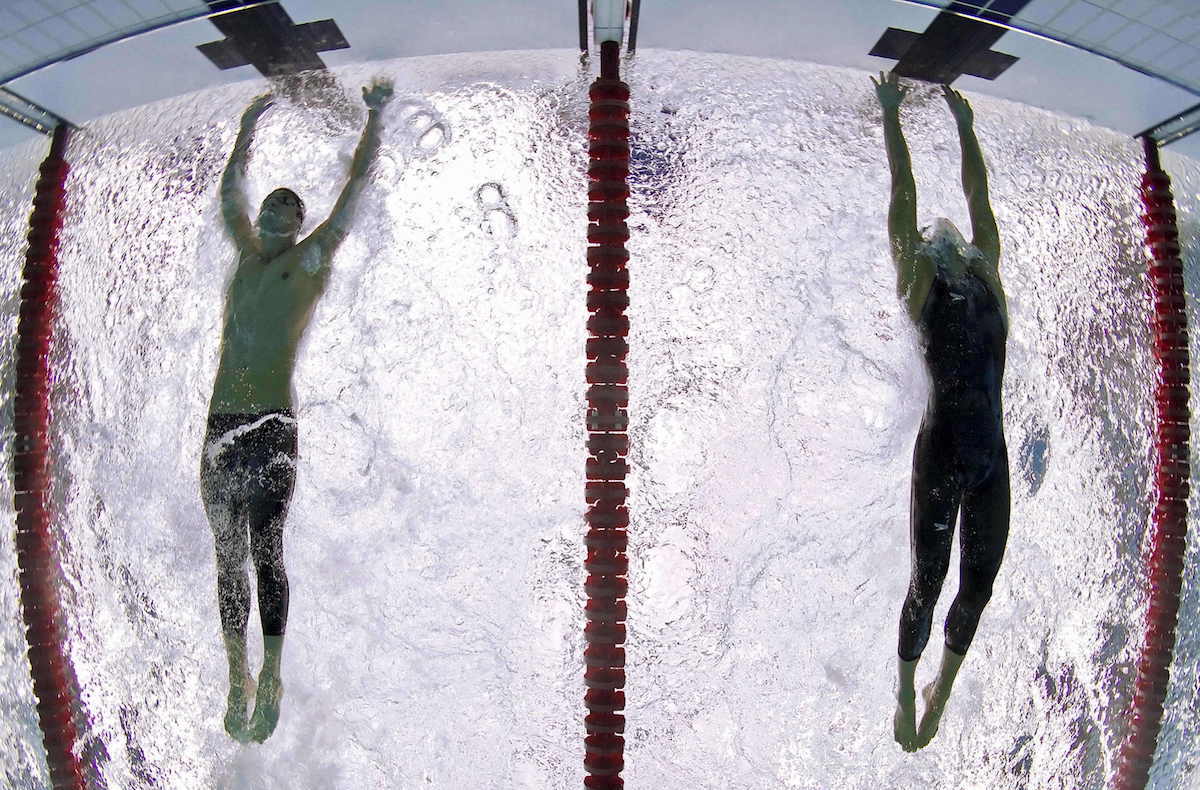
This is what winning by 0.01 of a second looks like. Phelps left, Cavic is on the right. Photo by PATRICK B. KRAEMER/EPA
Beijing also saw yet another extremely close finish in the men’s 100 meter butterfly – a memorable one for those of us who saw it. Michael Phelps came back from nowhere and ended up finishing just 0.01 seconds ahead of Milorad Cavic with a remarkable last double stroke. It seemed impossible, as even a few meters before the end Phelps appeared to have been far behind – but, as he later put it, “the results don’t lie,” and indeed, Omega’s touch pad technology showed immediately after their finish who had won, and by what astonishing margin.
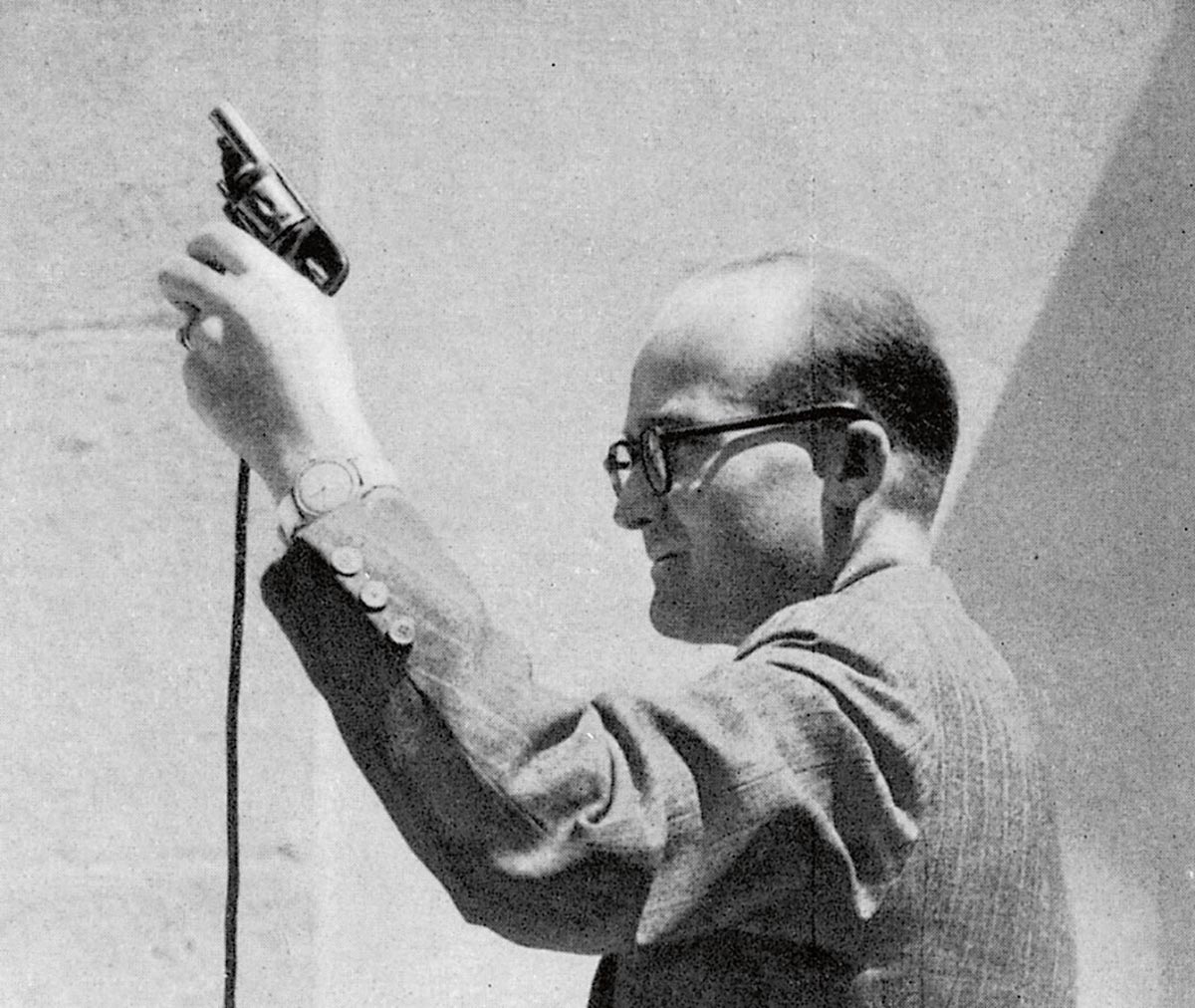
Since Vancouver, 2010, the Olympics has been relying on a bold new type of starting pistol that Omega has redesigned. Interestingly, it isn’t much of a stretch to say that the starting pistol is one of the most enduring images from any modern Olympic Games. The problem with the revolver-like pistol that had been in use until 2010 was with the simple physics of it: sound travels slower than light. Consequently, especially in athletics when speakers couldn’t be installed on starting blocks, the racer closest to the pistol had a slight advantage because they would hear the signal a fraction of a second before those further away – and, as we have seen countless times before, sometimes it is this very fraction that separates winner and runner-up.

Therefore, Omega developed the new electronic starting pistol, introduced for the short track and speed skating events in Vancouver. The device comprises a flash gun and a sound generation box. When the starter presses its trigger, a sound is played in speakers, a light flash is emitted, and a start pulse is given to the timing device. As any frequent traveler will surely understand, the old starting pistol was becoming more and more of a pain in the neck to travel with – whereas this red device can be transported without a 4-hour ventricle- and family background check.
Quantum Timing, Reaction Times & More
The Olympic Summer Games held in London, in 2012, saw Omega debut its new Quantum Timer, the beginning of a new chapter of the brand’s timekeeping products. This new device offered a resolution 100 times greater than its predecessor, while its timekeeping organ had a maximum variation of one second out of every million seconds, making it five times more accurate.
This precision was achieved through the use of a Micro Crystal component along with 16 independent clocks also fitted to the same device. This meant that 16 separate running times could physically be implemented in the hardware and the information for each could be communicated to scoreboards and television screens.

14th August 1948: Duncan White of Ceylon fixes his starting blocks to the track at the 1948 London Olympics. Original Publication: Picture Post – 4582 – Fastest Men On Earth – pub. 1948 (Photo by Picture Post/Hulton Archive/Getty Images)
Omega has also introduced new starting blocks for runners that allowed them to measure each runner’s reaction time entirely by the force applied against the back block, as opposed to movement. This meant that it could detect the reaction times of every runner – from children to world-class sprinters – without having to change any settings.
Rio, 2016, saw the debut of the latest generation Scan’O’Vision that is able to record up to 10,000 digital images per second. It also boasts improved light sensitivity, so there is less noise and an overall sharper image to be had – an easy feat in a consumer camera, but a real challenge to achieve when you give a sensor 1/10000th of a second for a readout. Simultaneously, the Omega Photocell also received an update so that now not two, but four cells would be integrated – into the same device, actually – so that body movements could be more accurately tracked in the moment of finish to more easily and accurately determine the winner.

Pyeongchang, 2018, sees Omega debut a range of wearable technologies to better track skiers, skaters, snowboarders, and ski jumpers as they process through time and space. Better still, a lot of this data is transmitted and featured live on television, making for an almost unreal, video game-like viewing experience for the audience – and yet more data to work with for the athletes and their coaches.
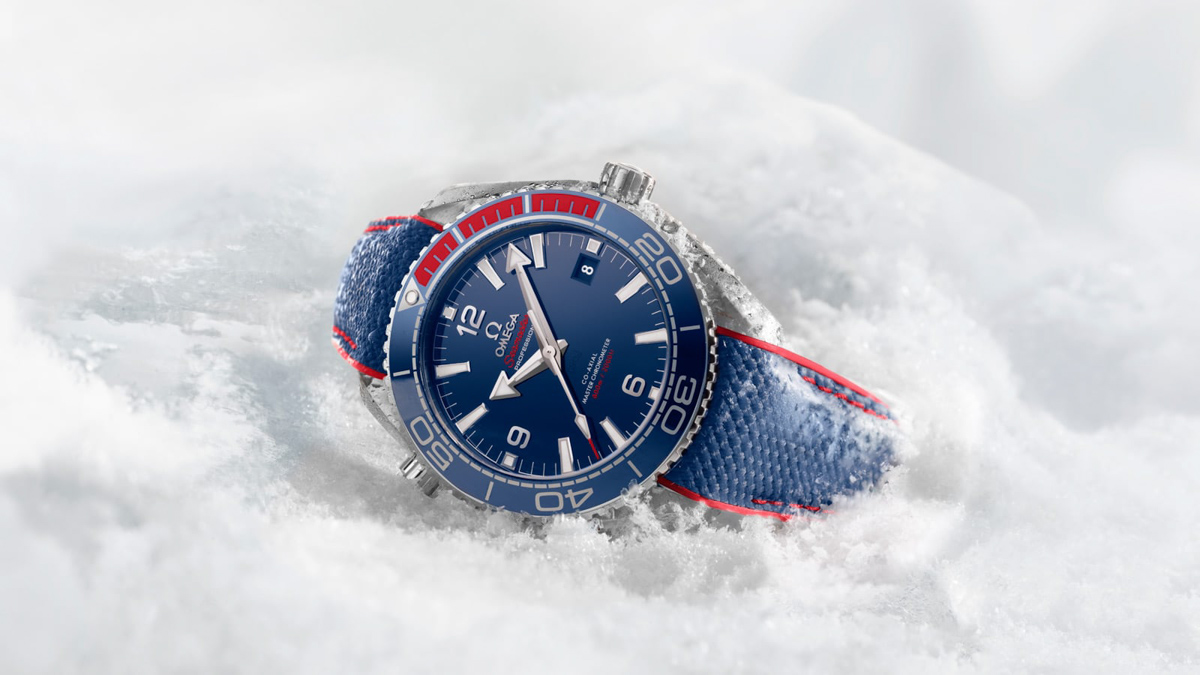
All in all, Olympic timekeeping has come a mind-boggling long way from the 30, though, mind you, very accurate, chronographs that Omega had shipped over with one lonely guy to the 1932 Los Angeles Olympics. By contrast, Rio, 2016, had 450 tons of Omega timing equipment. All this immense development wouldn’t be possible without Omega Timing (also known as Swiss Timing) and the dedicated team of engineers, technicians, and 21st century watchmakers who have been tirelessly stretching the limits of accuracy, reliability, and refinement in timekeeping technologies.
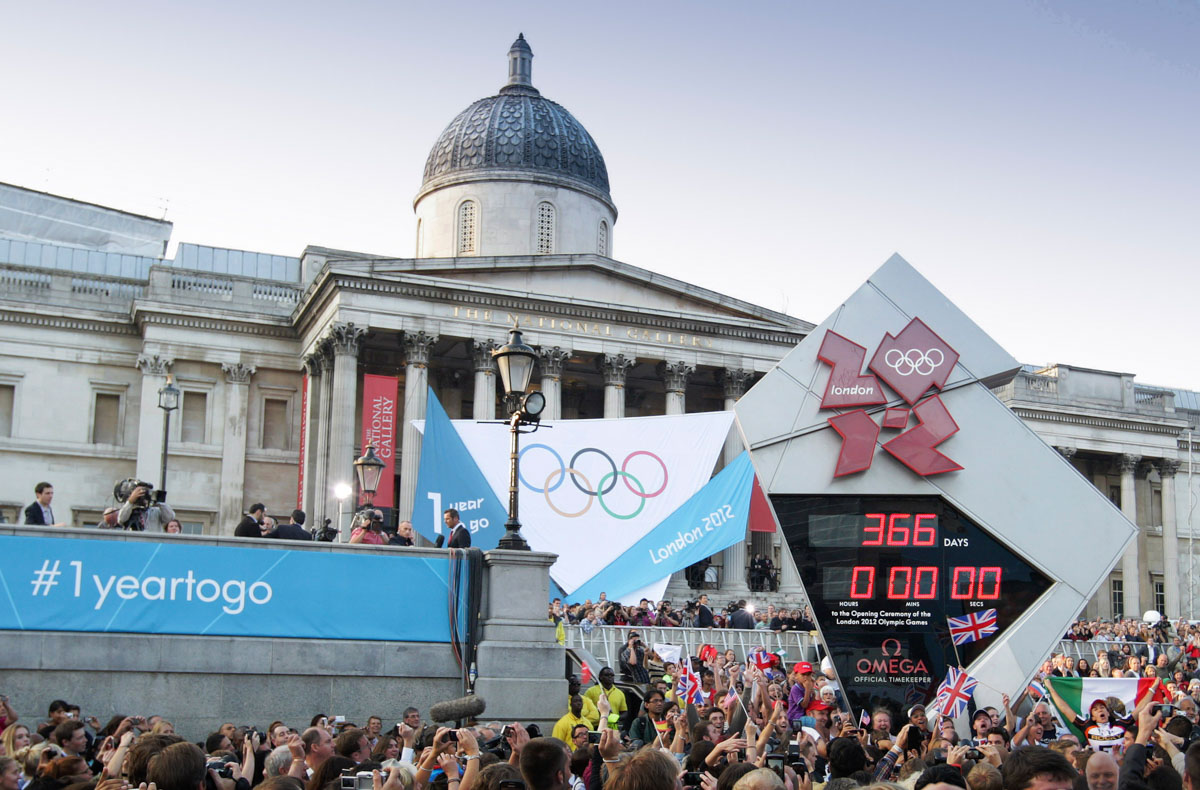
The Omega London 2012 Countdown Clock in Trafalgar Square shows 366 days, 0 hours, 0 minutes and 0 seconds to go to the Opening Ceremony of the London 2012 Olympic Games. Source: Omega/onEdition.
In the end, Mr Hayek Sr. was absolutely right. Giving up this know-how and Omega’s soon-to-be 100-year-long association with Olympic timekeeping would have been an absolute pity for the brand – and most likely also for the event. The last 86 years have given us some incredible devices; some have helped write sports history, while others brought the excitement of the Olympic Games – as well as Swiss watchmaking – closer to billions of spectators over this time. omegawatches.com

